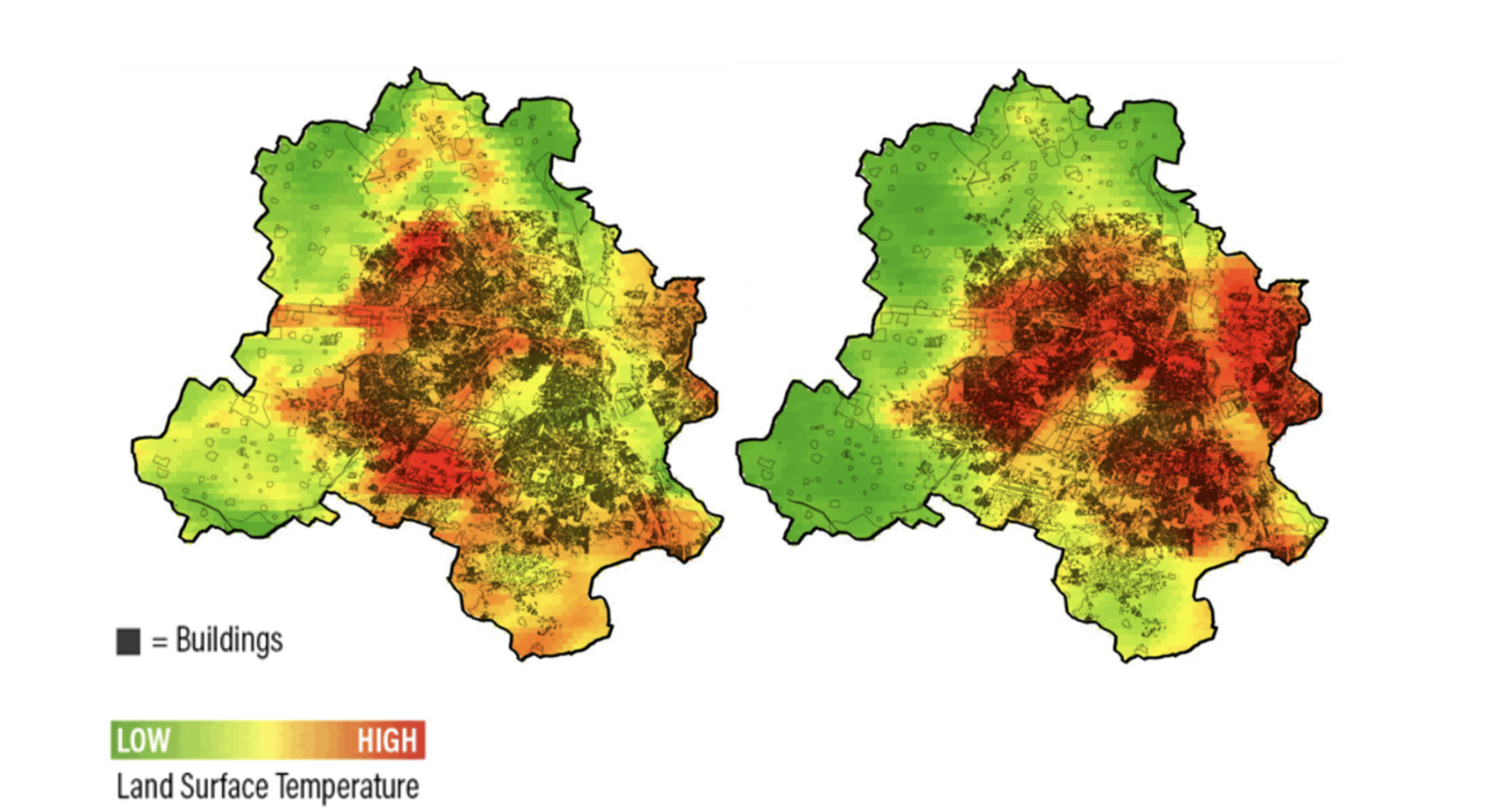Smart Surfaces In India
“Climate Change needs Climate Action, as heat waves are becoming more intense and frequent across the country. Our continuous efforts are towards devising and improving strategies to mitigate the adverse impacts of heat waves, particularly upon the poor and disadvantaged sections of the society.”
Large Economic Risk of Increasing Lethal Heat Waves: 167.2 billion potential labour hours lost in 2021 due to heat exposure - Equivalent to about 5.4% of national GDP (Quantifying the human cost of global warming, May 2023).
why are smart surfaces needed in india?
People died from heat-related mortality between 2012 - 2021, a conservative and underreported number from the National Crime Records Bureau, Government of India.
Indian women die from excess heat-related mortality every year. This is projected to more than double to 73,500 by 2050.
…particularly vulnerable and underserved populations
If heat increase is reduced to 1.5°C, the at-risk population would drop by 85% – down to 90 million
As documented by McKinsey Global Institute in its 2020 analysis entitled Will India Become Too Hot to Work?, India is on track to become one of the first inhabited areas to experience heat waves that exceed the survivability limit, even for healthy humans resting in the shade. This could occur as early as next decade. Per a 2023 peer reviewed study some 600 million Indians are at severe health risk in a projected 2.7°C warmer world. But if heat increase is reduced by 1.2°C — from 2.7°C down to 1.5°C — this would cut the at-risk population by 85% to 90 million Indians. We cannot slow global warming enough to limit a 1.5°C increase in our global temperature — but we can enable cities to adopt policies that can cool their homes by 3°C — and in doing so, substantially slow global warming.
Indian Cities are darker and hotter
…particularly in low-income neighborhoods
Although Indian cities are among the hottest in the world, only 12% of Indian dwellers currently have AC. Due largely to coal burning for electricity generation (of which a rapidly growing portion is for air conditioning), Indian urban residents suffer among the worst air quality in the world. Under India’s expected business-as-usual growth scenario, India will increase air conditioning 4-5x in the next two decades, driving a massive expansion of coal fired power plants. And this large projected increase in AC would directly heat cities by an additional up to 1.5°C because AC cools interiors by dumping heat outside. However, even this massive increase in AC would still leave half of Indian urban residents without air conditioning and exposed to even more extreme heat risks.
Delhi’s Land Surface temperatures at day (left) & night (right) (Source: WRI, 2019)
Difference in Surface Temperature between low-income and wealthier neighborhoods in Mumbai (Source: WRI, 2020)
partner cities in India
Citywide cooling through Smart Surfaces is being scaled today by the Smart Surfaces Coalition and its India partner The Energy and Resources Institute (TERI) — with MacArthur Foundation funding — in Bhopal.
The Government of Indore, is the second Indian city to voluntarily commit to adopting Smart Surfaces as a city-wide cooling strategy. Moving forward, we hope to engage and support 5 more Indian cities in creating a cooler, more livable future with Smart Surface solutions.
The following cities and states have signed letters of commitment to work with the Smart Surfaces Coalition:








